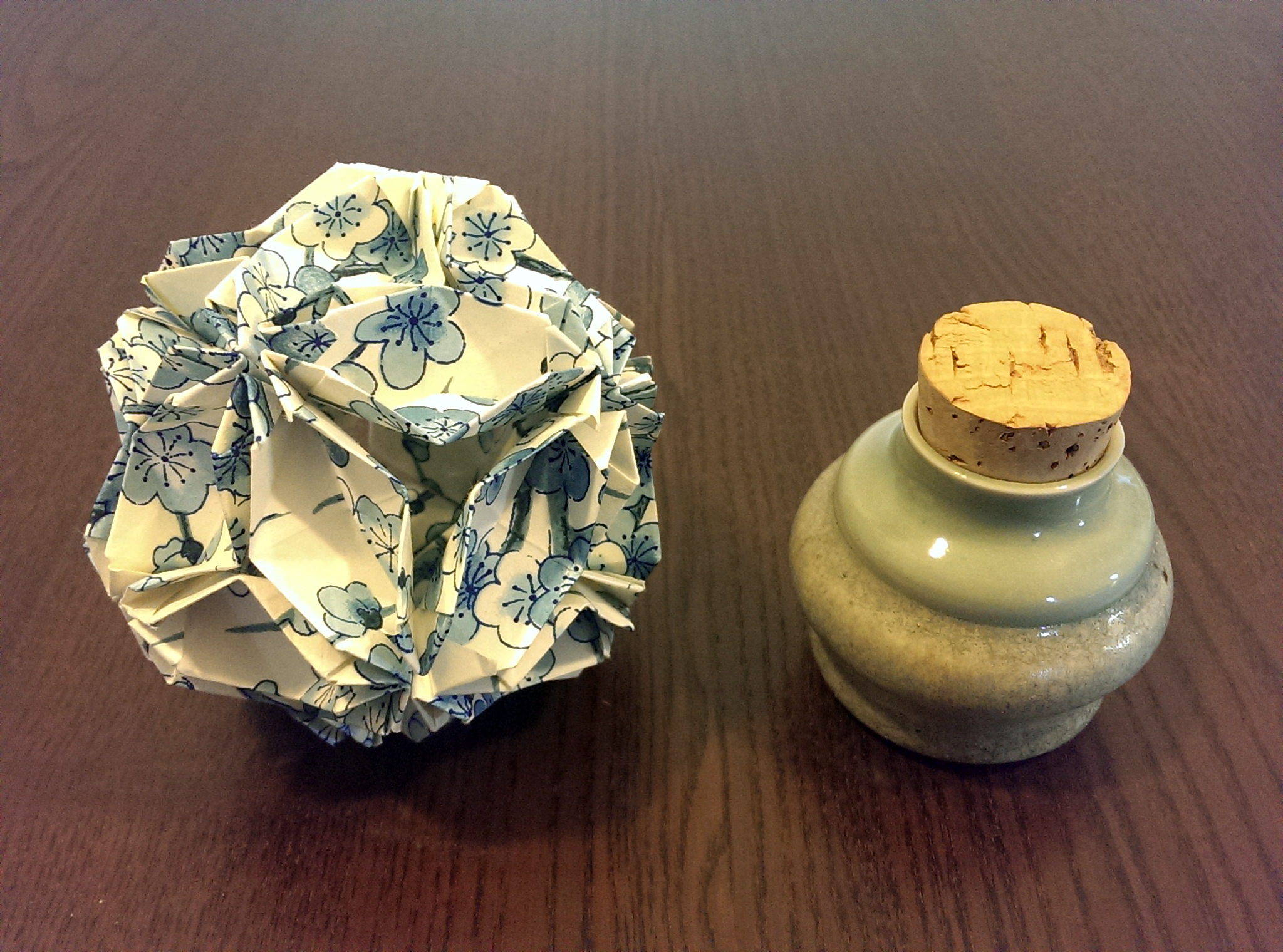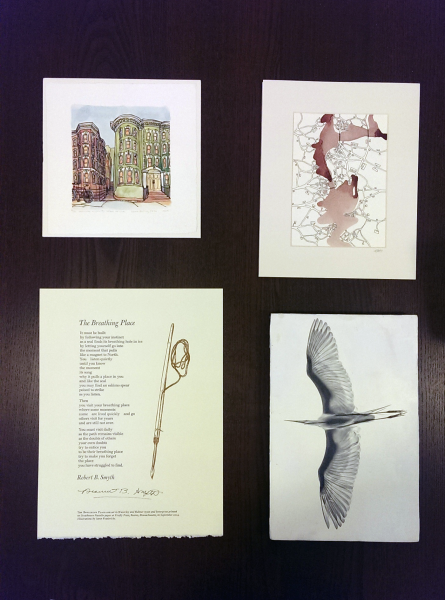This summer, I was fortunate enough to have the opportunity to teach a business basics class for a group of artists participating in a new way to create and sell artwork, Community Supported Arts. Like its inspiration, Community Supported Agriculture (CSA), CSArts is a way for producers to get paid in advance for their work, and a way for consumers to get a bounty of locally-produced original artwork. Last week, I attended the Harvest Party and picked up my bag of nine works of art.
Here’s a rundown. Be sure to visit each artist’s site for more information, and in some cases, behind-the-scenes looks at the production process. Last I heard there were just a handful of CSArt shares still available for purchase.
Clockwise from top left, a hand-washed pen-and-ink housescape by Laura Quincy Jones, a map of an imaginary place by Emily Garfield, a bird print on wood by Jude Griffin, and a letterpress broadside of a poem written and set by Robert Smyth.
An artists’ book by Cristina Hajosy, an abstract watercolor painting by Shannon Astolfi, and a plate with a hand-painted bird (after Audubon) by Eileen DeRosas.
Origami by Sok Song and a porcelain bottle by Maeve Mueller.
I have good reason to be biased, but I really think this is a fantastic program for the artists and also for the buyers. For less than I’ve often paid for a single photograph (my usual media of collection), I now have nine new works of art in several media I’ve never collected before. Aside from their origin, there’s no clear theme uniting them, but there are lots of interesting groupings and connections to be made for the inspired home curator. I know the artists better than the average buyer, but there’s enough information in the packaging and on the artists’ sites for a novice collector to learn about each piece’s creation and inspiration.
Although each artist made 50 pieces for this program, most of them have some element of individuality and all are signed and numbered. For example, each of Sok Song’s pieces has the same form, but is made of a different paper. You can see all 50 of Shannon Astolfi’s paintings on her website, and Maeve Mueller encourages her buyers to join an online community to see where the other bottles ended up. I hope more share buyers will post photos of their artwork so I can see more of the other 49 variations. In the event of a reunion, each of Emily Garfield’s map paintings links up with the next to form a single, very long, map.
It may be hard for some to buy art in advance and pretty much sight unseen, but at this price and with this number of works, I think most would be happy with a few pieces they love, and a few they can give as gifts. Of course part of the point is that CSArt share buyers will form a connection with one or more of the artists and buy more (and more expensive) work from them in the future. I know I’ll be keeping an eye on some of these artists, and not just to see if they were listening in business class.




